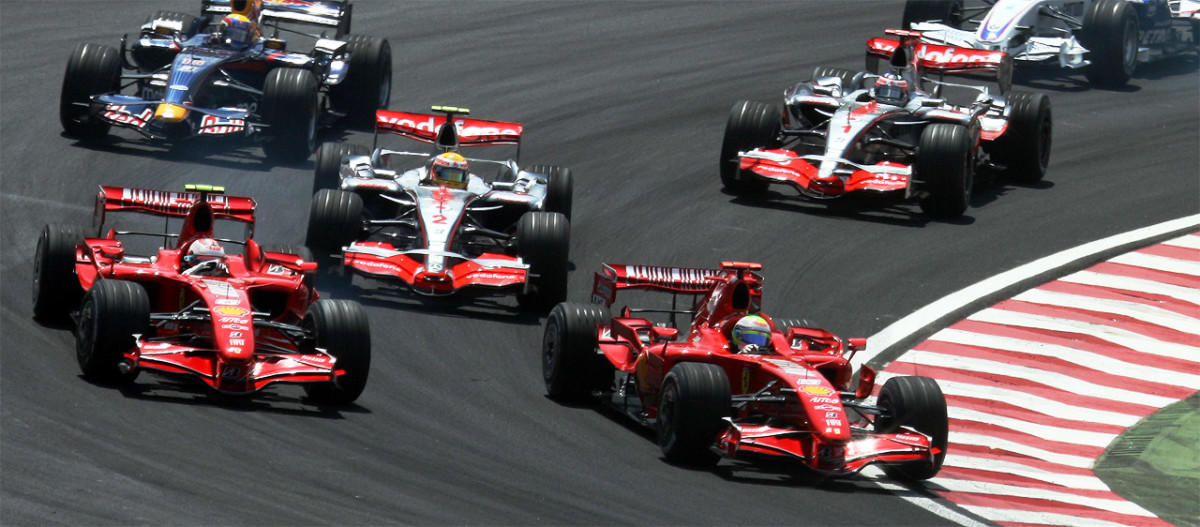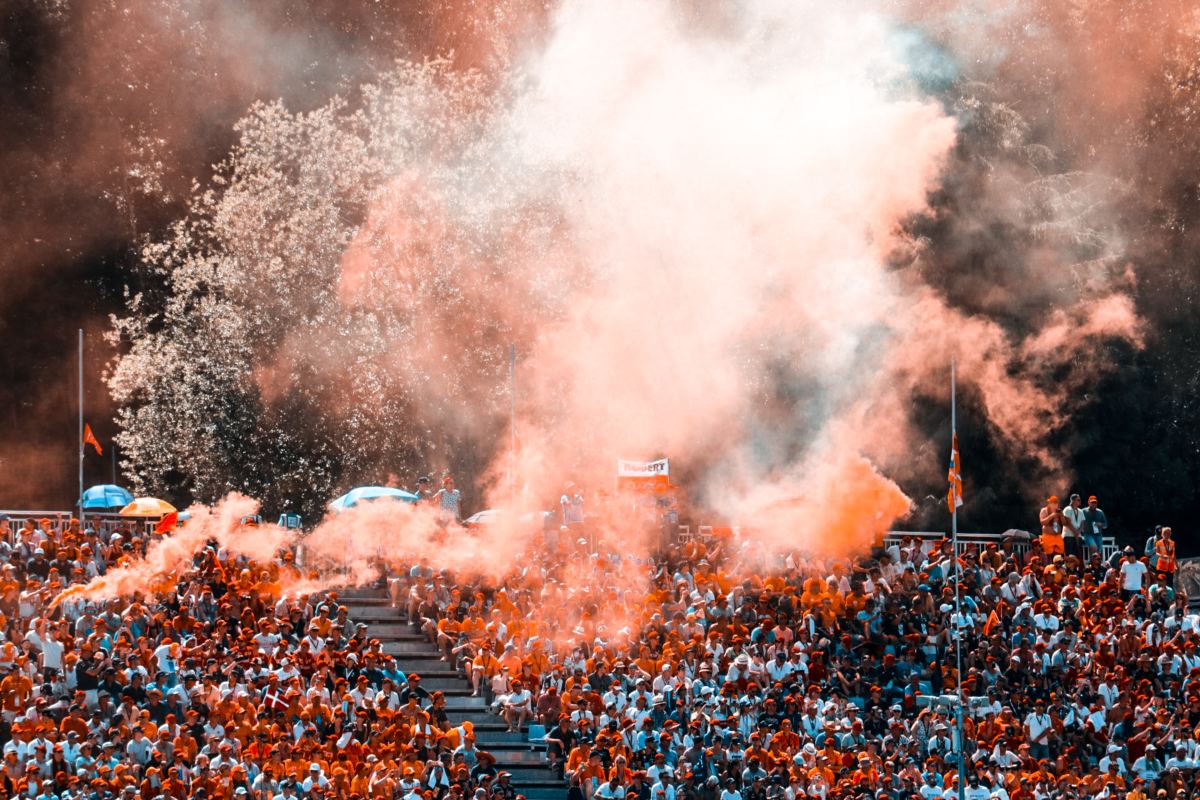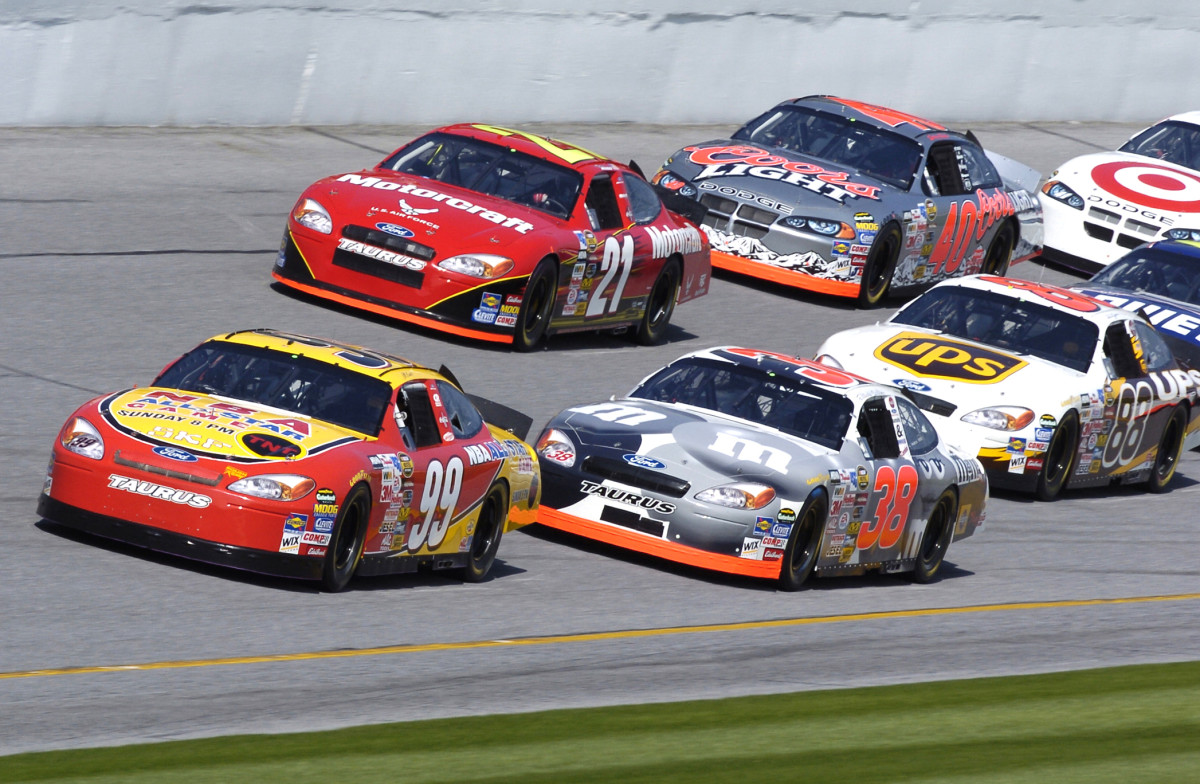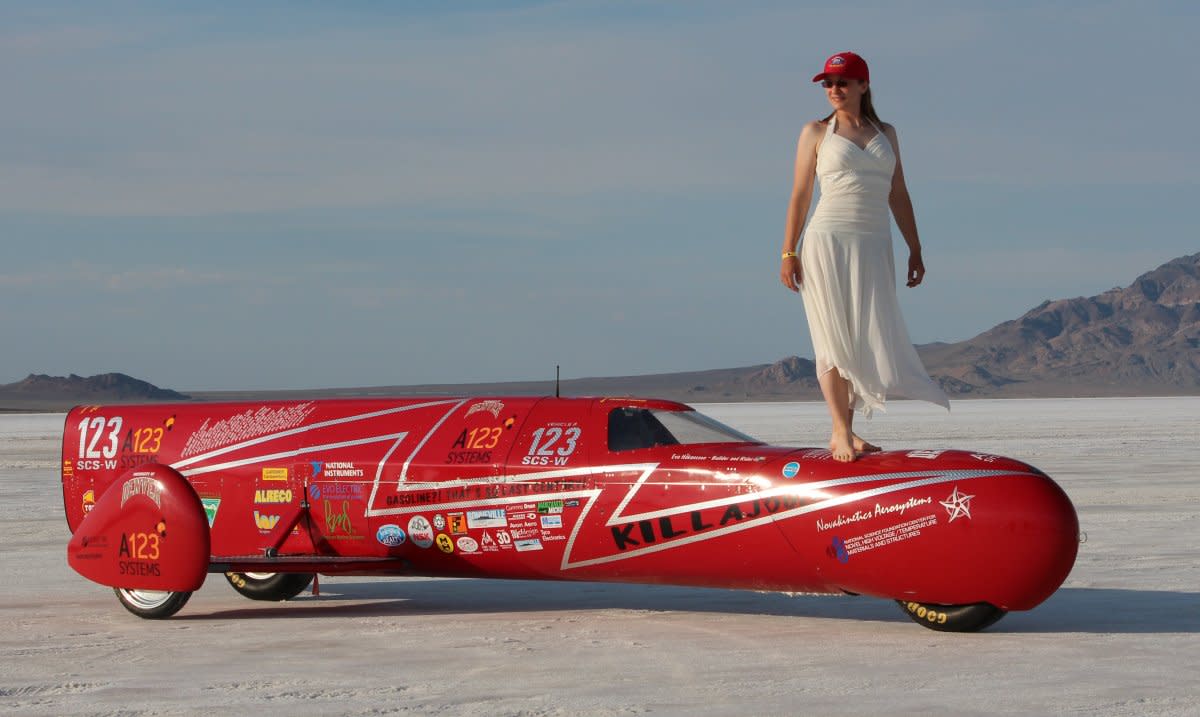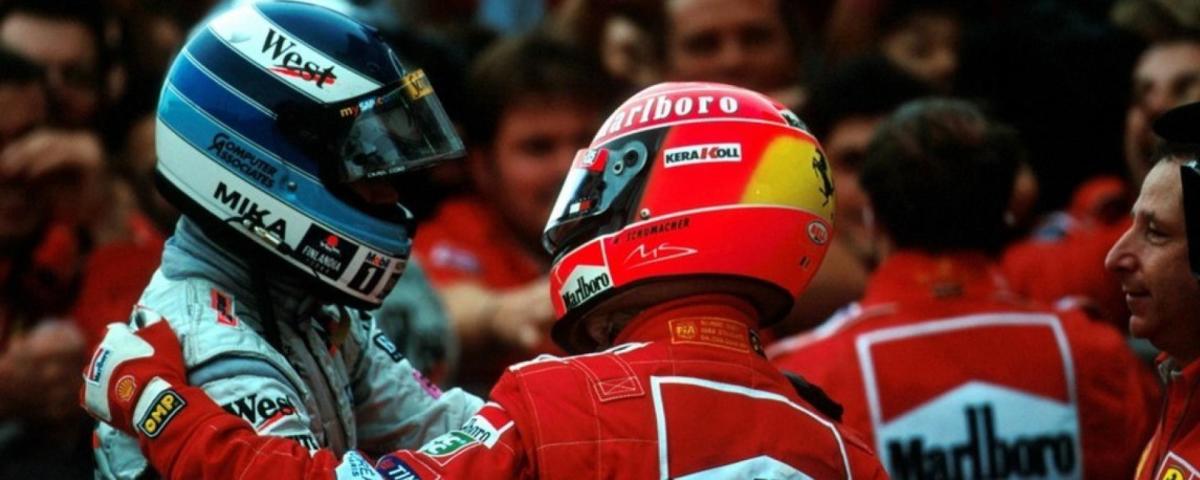Formula One History- 1950-2011
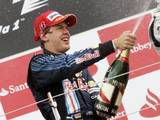
Formula 1 / F1 - 1950-2011
Formula 1 has only existed since 1950.
Formula 1 has a reputation amongst some commentators as not being a sport at all.
When Sterling Moss was asked whether it was a sport in 2008, he replied: “No but there isn’t the spirit you see. Modern Formula 1 is not a sport. It was a sport, but modern Formula 1 is a business. A very good business, well run and incredibly safe now.”
And whether you think it is a sport or not, there is no denying the incredible bravery of all of the drivers who have ever driven an F1 car.
F1 is about colour, really quick flying adverts and above all, brilliant driving.
There is nothing more thrilling than the moment all the red lights go off and the grid becomes a fast moving spectacle.
Welcome to this Formula One history.
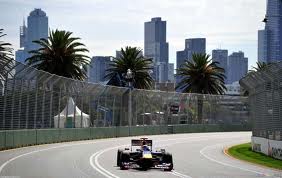
Formula One's Newest Tracks
In recent years, Formula 1 has seen a huge rise in popularity in countries with no previous interest; countries like Spain, India and Malaysia.
In turn this has led to the introduction of a number of new Grand Prix circuits, as it seems the whole world embraces Formula 1.
The magnificent new circuit in Malaysia is only one example, others can be found in China, Singapore and Bahrain.
Construction of the Hermann Tilke-designed circuit in Austin is scheduled to begin in December with the US Grand Prix due back on the calendar in 2012.
And recently news of a second US circuit in New Jersey was revealed - it seems Bernie Ecclestone hasn't quite given up second place to NASCAR in the states just yet!
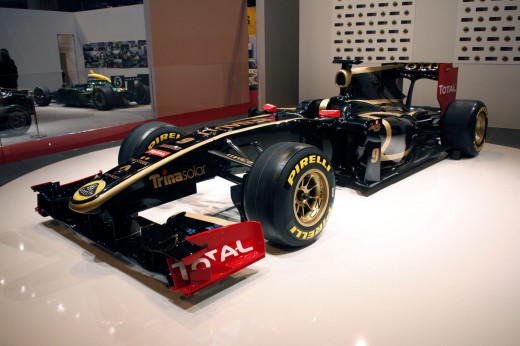
F1 Safety - 'After Senna'
The drivers now are in the safest cars ever, there are fewer crashes and fewer accidents and drivers' overalls, gloves and helmets are fire-proof.
Formula 1 has lost a lot of drivers to crashes, men like Jim Clark, Jochen Rindt and Ayrton Senna to name a few but its fans have remained because they love the discipline of drivers taking on difficult, twisting and perilous tracks at speed.
For all the logistical info, go to.......
Logistics - 1950-present
In recent years, Formula 1 has been criticised for using too many tyres, flying too many miles and generally not doing much for the carbon footprint. To give you an idea of this, here are the figures:
- The early seasons of Formula 1 consisted of about 10 races, in 2011 there are 19.
- FIA Formula 1 World Championship now travels something like 100,000 miles a year between races and test sessions.
- Hotel accommodation has to be arranged for a LOT of people. One team might need up to 100 rooms!
- Because all Formula 1 teams are based in Europe, getting kit, cars, people, tyres and technology to places like Singapore, Australia and Bahrain has to be fully co-ordinated. This means using cargo planes, arranging haulage when the destination is reached, hotels, flights etc. When it's over, it all has to be packed up again and moved on to the next destination or back to Europe.
- Tyre allocation has been reduced for 2011, with 11 rather than 14 sets of dry-weather tyres available to each driver per race weekend. This has made the 2011 season one of the most exciting for the last few years; choice of tyres have become even more critical when developing rac strategy.
Formula 1 is always evolving and its evolution since 1950 has seen thousands of changes to cars, tracks, tyres, technology and above all, safety. In 2011, it remains one of the most popular motorsports in the world today.
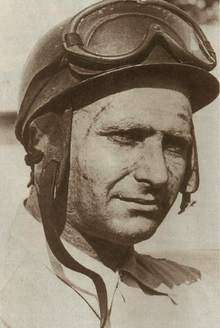
Onboard with Fangio
Formula 1 Drivers 1950s
Juan Fangio was an Argentinian Formula 1 Champion who won the World Championship 5 times with 4 different teams.
His dominance started in the 1950s, his most successful decade and his 5 championships remained the best by any driver for 46 years when Michael Schumacher.
Many consider him to be the greatest driver of all time. He had a winning percentage of over 46% in his races, compared with Schumacher's 34% to the end of the 2010 season.
Unlike some of today's drivers who come to Formula 1 after carting and GP2 and are still quite young men, Fangio came to F1 in 1948 and was already 37 years old by then.
He had no qualms about leaving any of his teams to drive a car he considered more competitive and was the ultimate competitor throughout his career. His main competitors were Ascari, Farina and Sterling Moss.
Juan Manuel Fangio died in Buenos Aires in 1995, at the age of 84. He was buried in his home town of Balcarce in Argentina.
Honourable Mentions
Alberto Ascari was an Italian racing driver and won the championship twice in the 1950s. He is one of only 2 Italian champions, winning both his championships in a Ferrari. Sadly, he died at the wheel of a Ferrari during practice at Monza in 1955. His father had also died in a racing incident.
Mike Hawthorn was an English driver who won his only Formula 1 championship in 1958. Hawthorn won the championship by 1 point from Sterling Moss but retired after winning the Championship after the death of his close friend, Peter Collins in the German Grand Prix the same year. Sadly, Hawthorn died the following year in a road accident in England.
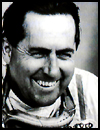
Formula 1 Drivers 1960s
Sir Jack Brabham was World Formula 1 Champion 3 times, winning in 1950, 1960 and 1966.
He remains the only driver to have won in a car he designed himself; Brabham's BT19 car built with his colleague, Ron Tauranac showed great promise and his second car, the BT20 was also successful for world champion, Denny Hulme.
Sir Jack's last Grand Prix victory occurred in 1970, the year he called a close to his long and successful driving career.
Sir Jack continued to be involved in racing, in a number of capacities and was also involved in the careers of his 3 sons. He still competes occasionally and remains a popular man in racing circles.
Honourable Mentions
Jackie Stewart won the Formula 1 Championship 3 times, in 1969, 1971 and 1973.
He had his 27th victory at Nurburgring; at the time this was a record.
Stewart was brilliant in appalling conditions, often winning in rain and fog.
He is also known for his views on the disgraceful safety conditions whilst he was driving.
Trapped in his own car in Spa in 1966, soaked in petrol, he was hoisted onto a pick up truck, and then laid on the floor at the first-aid centre, which was strewn with cigarette buts and rubbish.
His ambulance driver got lost on the way to Liege hospital and he was finally taken to England by plane for treatment.
Later he explained, "If I have any legacy to leave the sport, I hope it will be seen to be an area of safety because when I arrived in Grand Prix the so-called precautions and safety measures were diabolical."
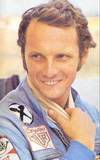
Formula 1 Drivers 1970s
Niki Lauda won the Formula One Championship 3 times in 1975, 77 and again in 1984.
Lauda had a successful career firstly with Ferrari and then later with McLaren.
Lauda won only 2 Grand Prix in 1974 but in 1975 he rewarded them with their first championship since 1964.
During the 1976 season, Lauda was involved in a terrible accident at the Nurburgring. He had tried unsuccessfully, to have the race abandoned due to his concerns over safety but the race went ahead. At this point in the season he was already the points leader with more pole positions than any other driver and winning the 1976 season looked like a formality.
His accident on the second lap, caused by a suspension failure, saw his car engulfed in flames with Lauda suffering terrible burns to his face, head and shoulders.
Lauda went on to win the championship again with McLaren in 1984 after coming back from retirement.
Honourable Mentions
Emerson Fittipaldi was the number 3 driver at Lotus when the death of Jochen Rindt and John Miles leaving the team led to him being given a chance to drive.
He didn't disappoint, winning his first race in the car after Rindt's death.
In 1972 he drove what is still considered to be one of the best Lotus cars, the 72D, winning 5 of the 11 grand prix that year to beat out Jackie Stewart for the Championship.
He repeated the feat in 1974 in a McLaren. In 1972, Fittipaldi was the youngest driver to ever win a Formula 1 World Championship.
He also won the Indie500 twice.
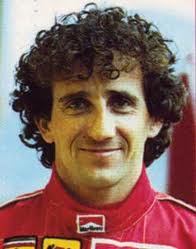
Formula 1 Drivers 1980s
Alain Prost won the Formula 1 World Championship four times and between 1987 and 2001 held the record for most grand prix victories with 51.
Prost won 3 times with McLaren and once with Williams.
He may well have had more championships had he not been competing with excellent teammates like Ayrton Senna, Nelson Piquet and Nigel Mansell.
Prost lost out in 1984 by half a point to Niki Lauda, only receiving half of his points after a victory due to an abandoned race in the Monaco Grand Prix and in 1988 to Senna because only a driver's top 11 results counted towards the championship; that year he called for rule changes to come in to ensure drivers received points for all of their drives (this started to happen in the 1990s).
Prost seemed to court controversy wherever he drove due to his push to be in the best car.
He was the ultimate competitor, winning 51 Grand Prix, surpassing Jackie Stewart's record by some margin.
This record stood until Michael Schumacher's heyday in 2001.
Prost's championships in 1985 and 1986 in the McLaren saw him win 5 of the 11 races in the first year and follow this with 4 victories and a host of podium finishes in 1986. His rivalry with Ayrton Senna started in earnest in 1988 when Senna joined Prost as teammate at a dominant McLaren; sparks flew regularly for the next two years with Senna winning the title in 1988 and Prost in 1989.
In 1990, Prost joined Ferrari, convinced that McLaren's engine manufacturer, Honda, favoured Senna. Their sparring on the track continued until Senna's untimely death on May 1st 1994.
Prost was a pallbearer at Senna's funeral and has said 'when he died, part of me died too".
They were fierce but respectful rivals and their era of Formula 1 is arguably, one of the most exciting in the history of the sport.
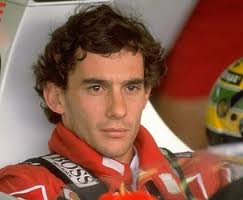
Honourable Mentions
Ayrton Senna started his brilliant rise to prominence in the 1980s and would continue to win 2 more Formula One championships in the 1990s.
His life was cut short in a tragic accident at the San Marino Grand Prix in 1994, he is the last driver to die in a Formula 1 race.
We can only guess whether he might have gone on to win other championships. His ten years in Formula 1, from small beginnings at Tolman to his death driving a Williams stand out for the level of success he achieved.
He is widely regarded as one of the greatest Formula 1 racers of all time.
Senna was often quoted using driving as a means of self-discovery and racing as his own metaphor for life, "the harder I push, the more I find within myself. I am always looking for the next step, a different world to go into, areas where I have not been before. It's lonely driving a Grand Prix car but very absorbing. I have experienced new sensations and I want more. That is my excitement, my motivation."
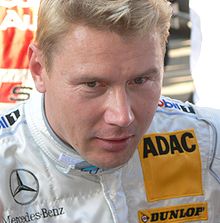
Formula 1 Drivers 1990s
It was an easy choice choosing Mika as the star of the 90s.
Michael Schumacher also won 2 Formula 1 championships but Hakkinen achieved the same feat after being with his team since 1993 and proving he could be almost 'at one' with one of the cars he helped to develop.
McLaren had seen his potential at Lotus and it was not long before he got a chance to drive;
His first podium finish came in only his second race for McLaren at Suzuka.
Senna left McLaren for Williams in 1994 and Hakkinen was joined by Martin Brundle.
In 1995, Hakkinen achieved another 6 podium finishes, showing good consistency in a developing car.
He was badly injured during practice in the Australian Grand Prix but recovered well to compete again the following year.
Hakkinen's commitment to McLaren and their Mercedes Benz engine led him to remain with the team and in 1998, Adrian Newey's appointment as designer saw Mika in the fastest car that year.
In a superior car, he won back to back Formula One championships, aided (sometimes unfairly some have argued) by team orders which saw his teammate, David Coulthard move over when required.
Hakkinen remains a well-respected Formula 1 driver. Michael Schumacher has claimed he was the driver he most respected during their time racing together.
Villenueve v Schumacher Jerez 1997
Honourable Mentions
The 1990s produced some really hard-fought rivalries and two of them stand out from all of the others because they involve drivers who were able to see off the sometimes dubious tactics of a rising Michael Schumacher.
So I play a short tribute to Nigel Mansell for being champion in an exciting year for us Brits but my two other young men get the nod over him.
Damon Hill rose from a young unknown, firstly to partner Alain Prost and then Ayrton Senna at Williams.
He pressed Michael Schumacher constantly during the 1994 season with only a point between them leading up to the Australian Grand Prix.
Hill's driving skill could do nothing about the collision between him and Schumacher which effectively handed the Formula 1 Championship to Schumacher for the first time.
At the time, Hill lay no blame with Schumacher but has since qualified that statement.
By 1996, the Williams was a superior car and Hill was dominant from the start of the season, winning the title in style in Japan.
Jacques Villeneuve was another driver who was able to punctuate Michael Schumacher's rise to power in Formula 1.
He narrowly missed out on the title to his teammate, Damon Hill in 1996 and his last gasp victory over Schumacher at Jerez after Schumacher's spoiler tactics (similar to his tryst with Hill in 1994) remains the highlight of his racing career.
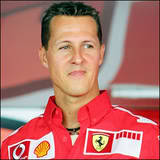
Formula 1 Drivers 2000s
Michael Schumacher started his Formula 1 career at Jordan as the number two driver to Andrea De Cesaris.
His first race at Spa (with which he was unfamiliar) saw him learn the track by riding around it on a fold-up bicycle.
He out-qualified De Cesaris but went out of the race with a clutch problem.
He drove for Benetton for the rest of the 1991 season.
In 1992, his first podium finish came at the Mexican Grand Prix and his first victory at the Belgian Grand Prix;
Schumacher would prove to be one of the best drivers in wet conditions.
His first two Formula 1 Championships in 1994 and 1995 in the Benetton were overshadowed by accusations about the car's technology. In 1995, Schumacher won the championship again and other teams started to see his huge potential as a driver capable of coping with any conditions and as someone completely 'driven' by what he did; a driver happiest when he was on the ragged edge.
Schumacher is an intelligent driver, even if sometimes he could be unsporting.
In 1996 he joined Ferrari and stayed with the team for the next 11 years, winning 5 consecutive championships with them.
Ferrari brought Ross Brawn over from Benetton to be Schumacher's race engineer and Ferrari, after a long break from success, now had the most successful team in motor racing.
Schumacher's championship in 2000 saw him on pole 9 times with 9 wins (12 podiums) but what followed in 2001 and 2002 was out and out dominance, Schumacher won 9 times again in 2001 but 11 times in 2002.
Amazingly, he achieved podium finishes 17 times in 2002.
The car was mechanically and aero-dynamically sound with a driver possessing amazing consistency and talent; though Ferrari were not averse to allowing Schumacher to pass his teammate, Ruebens Barichello to ensure victory.
The 2003 Formula 1 season was a close affair with both McLaren and Williams competitive.
Kimi Raikkonen needed to win the last race of the season to win the championship with Schumacher only needing one point to win.
His eighth place finish saw him once more win the championship. The Ferrari returned to domination in 2004 with Schumacher winning 12 of the first 13 races of the season but that all changed in 2005 because of rule changes about tyres.
Scumacher retired after the 2006 Formula One season ended.
It's hard to keep a good man down though and Michael returned to Formula 1, reunited with Ross Brawn in 2010.
He retired for the second time in 2012.
Honourable Mentions
By the end of the decade, Schumacher's prominence as a driver had been usurped by the new kids on the block, Fernando Alonso, Lewis Hamilton and Sebastian Vettel.
Sebastian Vettel is turning out to be the driver of his generation so far and will continue to be successful as long as he is sitting in a competitive car like the Red Bull.
Fernando Alonso still shows flashes of brilliance in the Ferrari so for now it is a case of watch this space! Let's see if the Ferrari can be a Formula One championship winner before 2020.

